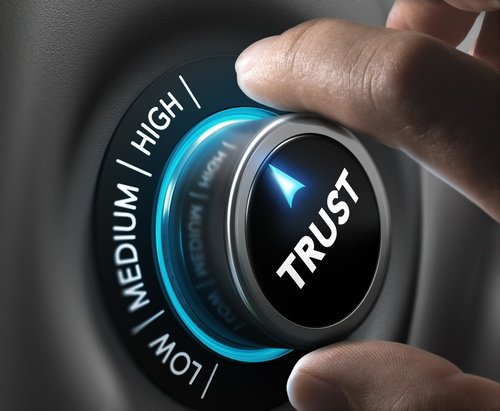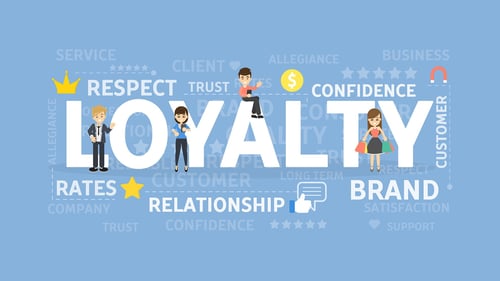
Indeed, brand safety isn’t a new topic, but its growing relevance continues to gain global attention in 2018.
In 2017, JPMorgan Chase faced the brand safety crisis head-on. After its ads appeared next to offensive content, JPMorgan Chase cut the number of sites it advertised on from 400,000 to just 5,000 a month.
Earlier this year, Bank of America became the first major company to appoint a brand safety officer to “clean house” and address issues of ads appearing next to inappropriate content, ad fraud, and transparency to ensure a positive customer experience and protect the firm’s reputation online.
Similarly, global media and advertising network, UM Worldwide appointed global brand safety officer to lead UM’s efforts in “stopping brands’ ads from popping up alongside damaging content and ensure accountability is taken when these issues arise.” Then in May, Cisco Systems made a bold move to prioritize safety and emphasize its brand image when the tech giant "temporarily paused" advertising on YouTube due to brand-safety concerns.
A recent study by Oath, Inc. (a subsidiary of Verizon Communications), revealed 94% of advertising decision-makers are worried about brand safety, and 58% are more concerned this year than last year. Although marketers are well aware of the brand safety problems related to ad placement and brand reputation, they understand that digital is a pivotal place to be to reach of a large group of consumers.
Taking a Proactive Approach to Brand Safety
The risks surrounding brand safety are not going away anytime soon. Our brand consultants regularly encourage marketers and brand managers to keep working to find viable solutions to avoid potential complications, including issues with transparency, brand safety, and fraud. Virtually all brands must examine how they operate in digital media to be safer going forward and confirm ad dollars are invested in quality environments.
Ensure that vendors and agencies follow clear brand protocols. Even with a brand safety officer, the size of the modern marketing operation requires an all-hands-on-deck enforcement operation. The brand safety chief will need to make sure that partner organizations are providing full transparency into these efforts.
Usually, an experienced media buying partner will be able to offer you some brand safety assurance when it comes to mitigating the risk of damaging your brand’s reputation; make sure to converse with the companies you are potentially considering before you invest.
Consider private marketplaces. Fortunately, advertisers don’t have to choose between embracing programmatic software—designed to automate how and where ads are placed online—for their digital campaigns exclusively or shunning it entirely. Instead, they can look to private marketplaces (PMPs) that have been created by premium publishers. These offer the benefits of programmatic across select properties that are far less likely to contain objectionable content.
Proactively monitor campaigns. Ultimately, there’s no substitute for proactive policing. Both advertisers and marketers need to be prepared to track where their ads appear on an ongoing basis and to take action when they find that their ads are not where they should be.
Marketers and brand managers know better than anyone that building a brand's reputation is no easy undertaking. As the online advertising world becomes more saturated, digital advertising remains one of the best ways to reach your audience. When it's targeted and measurable, digital advertising can be engaging and compelling. However, if you want the best ROI for your advertising dollars, then you need to make sure that you're investing in brand safety solutions to help you determine your ads are being safely placed.
Recent Posts
Posts by Topics
- Brand Strategy (57)
- Brand Strategy Consulting (28)
- Brand Differentiation (27)
- Customer Experience (24)
- Brand Positioning (22)
- Marketing Strategy (9)
- Brand Extension Strategy (8)
- Customer Behavior (8)
- Brand Architecture Strategy (7)
- Brand Extension (7)
- Brand Growth (7)
- Brand Portfolio & Architecture (7)
- Brand Purpose (7)
- Brand Value Proposition (7)
- Brand Engagement (6)
- Brand Portfolio Strategy (6)
- Brand Storytelling (6)
- Rebranding Strategy (6)
- Brand Awareness (5)
- Brand Image (5)
- Branding (5)
- Rebranding (5)
- Technology (5)
- B2B Brand Strategy (4)
- Brand Experience (4)
- Value Proposition (4)
- Brand Extendibility (3)
- Brand Metrics (3)
- Brand Repositioning (3)
- Corporate Branding (3)
- Differentiation Strategy (3)
- Measurement & Metrics (3)
- Brand Engagement Strategy (2)
- Brand Portfolio (2)
- Brand Promise (2)
- Brand Voice (2)
- Digital Marketing (2)
- Digital and Brand Experience (2)
- Employee Brand Engagement (2)
- Brand Architecture (1)
- Brand Development (1)
- Brand Equity (1)
- Brand Identity (1)
- Brand Measurement (1)
- Brand Name (1)
- Brand Strategy Consultants (1)
- Brand Strategy Firms (1)
- Digital Strategy (1)
- Internal Branding (1)
- Messaging (1)


